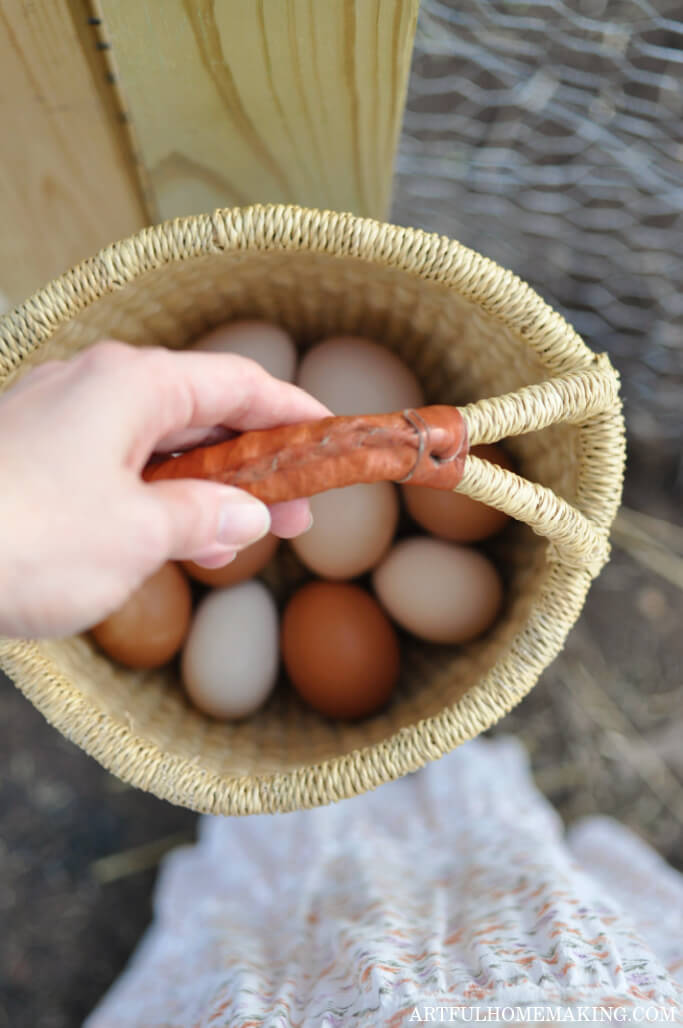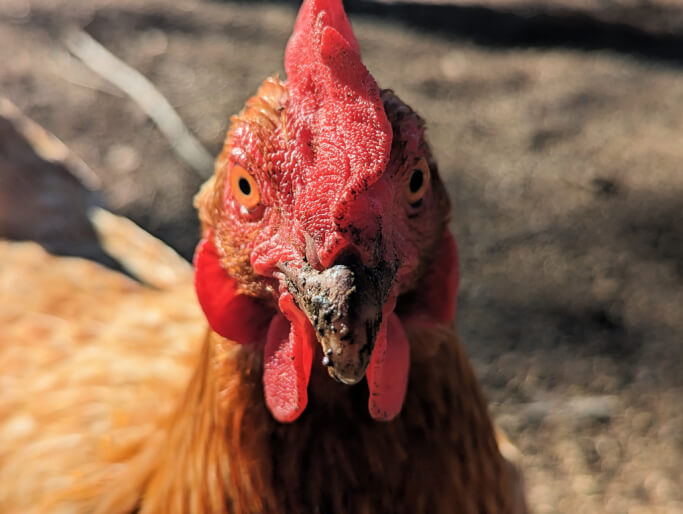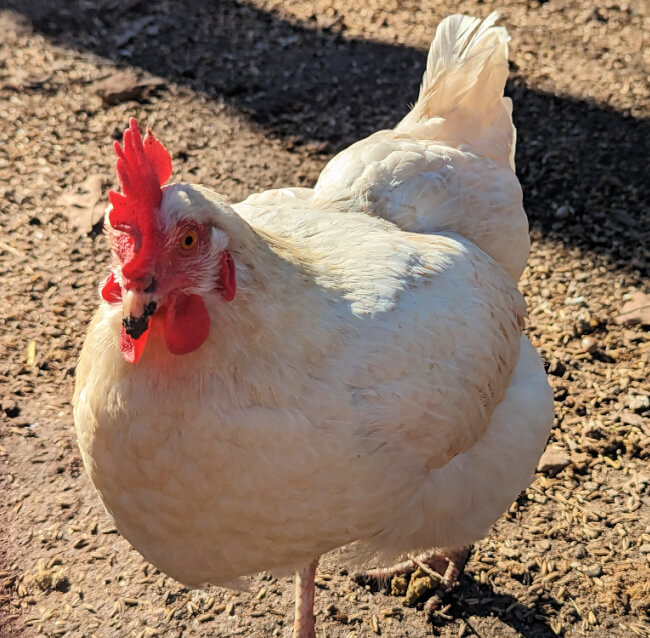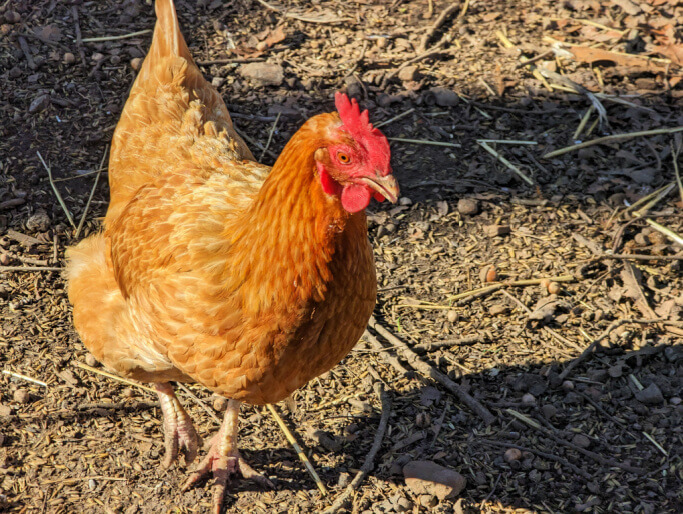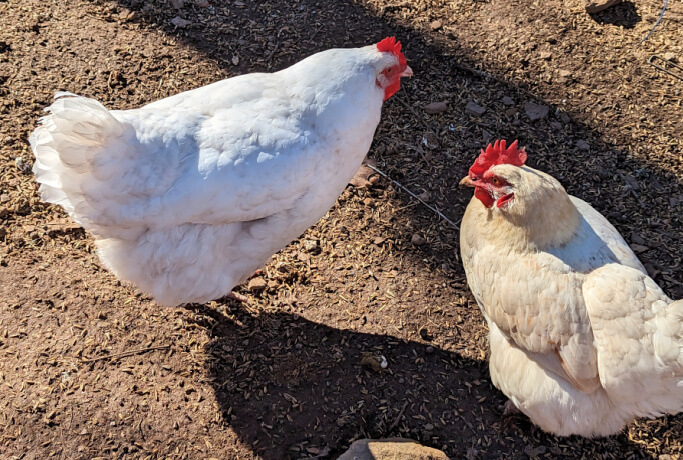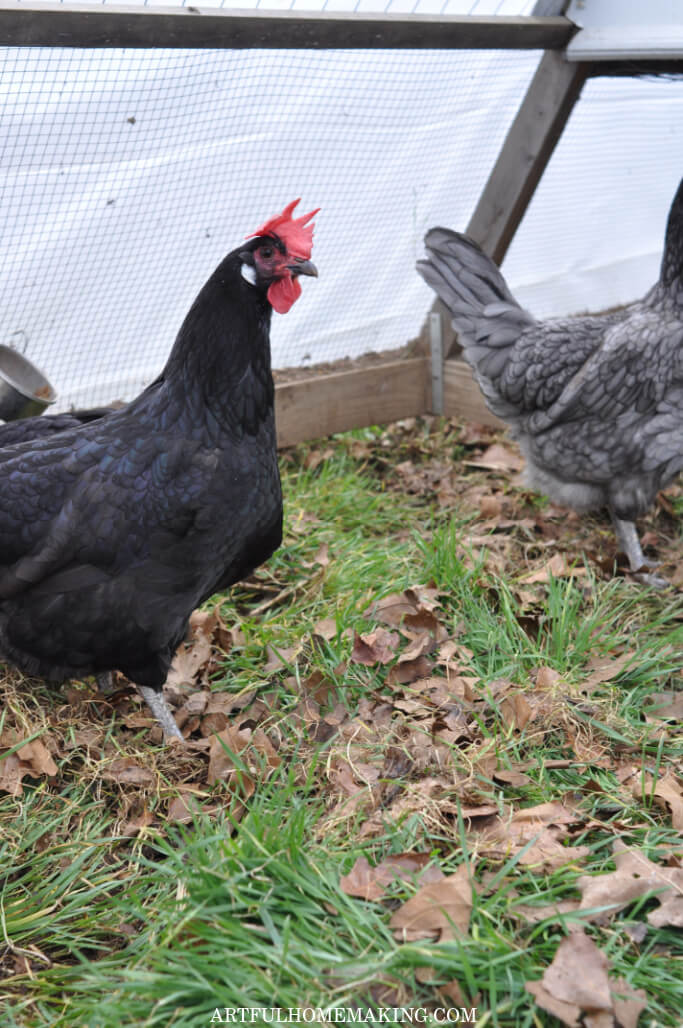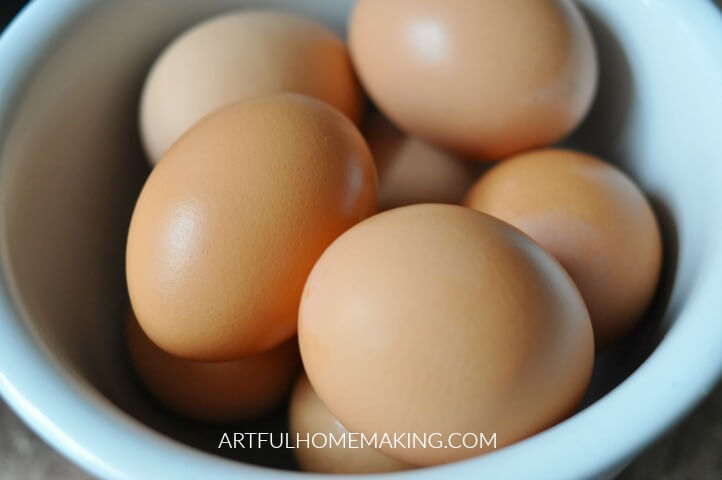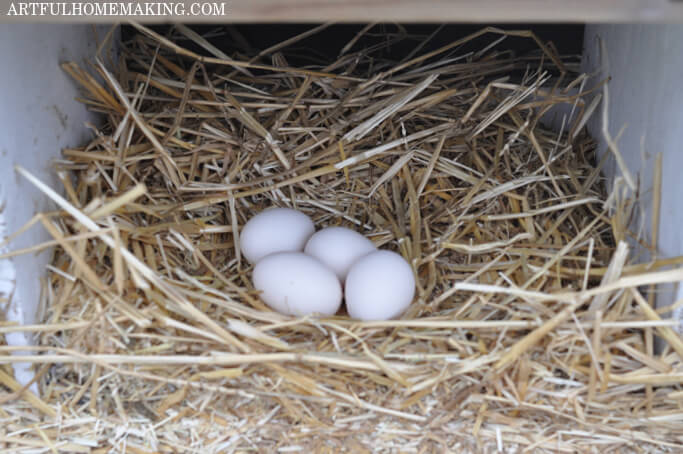What are the Best Chickens to Lay Eggs (2024)
One of the main questions we had before first getting backyard chickens is what are the best chickens to lay eggs? Some people are more interested in meat chickens, but we knew that our main purpose in wanting chickens was to have lots of fresh eggs.
In researching this topic, my husband and I found that not all chickens are created equal when it comes to laying eggs. There are so many different breeds to choose from! And different breeds produce different sizes and quantities of eggs.
I’ve written this to help you find some of the very best layers. I’ll share what other people have to say and what our family’s experience has been with different breeds.
We’ll also go over not only which chickens lay the most eggs, but the ones that lay the biggest eggs, as well as the ones that are best for beginners.
Learn how to get started with backyard chickens here.
Affiliate links included below, which means I may make a small commission at no extra cost to you. As an Amazon affiliate I earn from qualifying purchases. Read my disclosure here.
What are the Best Chickens to Lay Eggs?
Now we’re ready to talk about the question everybody’s asking: What is the best breed of chicken for laying eggs?
Depending on who you ask, you’ll get a variety of opinions. The truth is there is not only one right answer!
There are several important factors to look at when deciding on an egg-laying chicken breed for your home flock.
These include the number of eggs the chicken can lay, the size of the eggs, the color of the eggs, the temperament of the chicken, and the ease of care.
Don’t worry—we’ll go over each of these one by one and I’ll offer my opinion on these questions.
Now, without further ado, let’s dive into the top 10 best egg-laying chicken breeds for backyard chicken owners!
Rhode Island Red
If you’re looking for a chicken that is easy to care for and also has a good temperament, then Rhode Island Red chickens are an excellent choice! We’ve had some Rhode Islands in our backyard flock for several years now.
They are generally excellent egg-layers, producing large brown eggs almost every day (in the 250 per year range).
Rhode Island Reds are great for families with young children and can make great pets. Some people say they can occasionally be aggressive towards other chickens, but we haven’t noticed this with ours.
They’re on the large (heavy) side of the hen spectrum, but they’re also a good choice for a dual-purpose breed — in addition to laying eggs, they can also be used for meat production.
The New Hampshire Red was developed from Rhode Island Red and is also one of the best chicken breeds for eggs.
Leghorn
My grandmother and my dad both raised white Leghorn chickens — and for good reason! White Leghorns (also known as “Pearl White”) are one of the most popular egg-laying breeds in the United States.
They are more on the smaller size as far as chickens go, but they lay large white eggs almost every day (often around 300 per year).
They also start laying earlier and then continue laying later than many other breeds — a definite plus for those looking for heavy layers!
White Leghorns are a good choice if you have limited space since they are a smaller breed of chicken. However, they are known to be flighty, noisy, and easily stressed. Because of this, White Leghorns may not be the right breed if you’re just getting started with chickens.
Heritage Leghorns (Silver, Brown or Red) are also available, and they have a better disposition than their Pearl White cousins. But the heritage Leghorns aren’t as good layers as the White Leghorns.
Amber Star
Amber Star is another breed that’s known for its ability to produce a large number of large eggs. We originally had several Amber Stars in our home flock, but unfortunately some of them were killed before they reached the egg-laying age.
The Amber Star is one of the hybrid breeds that’s been bred specifically for high egg production. (They are known as a “sex link” breed as they are the offspring of heritage chickens, and males and females look different at birth.)
We currently have one Amber Star in our home flock. She has been the most reliable layer in our flock! She is also on the smaller size and is pretty calm with a good disposition.
Amber Star chickens are easy to care for — this makes them the perfect addition to any backyard chicken coop. They are an ideal choice for beginners or families with young children.
(Looking for a great book on how to keep your flock healthy? We have this one and have referred to it several times. These are my favorite homesteading books.)
Red Star
The Red Star (also known as ISA Browns) is another hybrid chicken breed that’s known for its ability to pump out large brown eggs. They are prolific egg layers and can lay up to an impressive 320 eggs per year!
Red Star chickens are a large bird, are easy to care for, and have a generally docile temperament.
We have Red Stars in our flock. Although they laid well for the first couple of years, their production has gone way down with time. But I’m not sure if this is typical for Red Stars in general.
Australorp
The Australorp is a hardy breed that tolerates both hot weather and cold climates. Related to Black Orpingtons and originally coming from Australia, they are a breed that’s known for having a good disposition.
Black Australorps are a medium-sized bird that can also be used as dual-purpose chickens for meat production.
These chickens are one of the best egg-laying breeds, laying large brown eggs in the range of 250 eggs per year.
Plymouth Rock
Plymouth Rocks are hardy birds and an easy-to-care-for heritage breed. They lay medium-to-large brown eggs and are excellent layers, producing an average of 250 eggs per year. They are also typically docile and friendly.
Although all chickens will lay less frequently the older they get, I have heard reports of Plymouth Rocks laying eggs for up to 10 years — much longer than other breeds!
Plymouth Rocks are heavy birds, so they are also good for meat. They are also known for their ability to handle cold temperatures. This makes them a great choice for those living in colder climates.
We’ve never had Plymouth Rock chickens, but we did have some Dominiques. One variety of Plymouth Rocks are produced by breeding Dominiques with another heritage breed.
Orpington
We’ve had White Orpingtons from the beginning of our backyard chicken raising adventure. These are big birds (chunky chickens!) that lay medium-sized brown eggs.
Orpingtons are a docile and friendly breed — my youngest son used to bring one inside and it sat quietly in his lap while he petted it!
However, they are not as prolific egg-layers as some of the other breeds on this list. Orpingtons produce an average of 200 eggs per year. They can sometimes be broody (meaning they like to sit on their eggs). They also make a good dual purpose meat bird.
In addition to the White Orpington, the Buff Orpington (more of a tan-gold color) is also a good layer.
Easter Eggers
If you’ve spent any time on Instagram viewing homesteading accounts, you’ve likely come across photos of beautiful blue eggs and green eggs.
There are several breeds of chickens that produce different colors of eggs, but Easter Eggers (sometimes known as an olive egger) are one of the main types that make colored eggs.
Easter Eggers are not actually a heritage breed but a mixed breed that resulted when Araucanas and Ameraucana chickens were mated with other breeds.
Their egg color comes in a range of colors, often olive green or blue—and occasionally even pink! I really love the look of colored eggs and am so happy that we’ve ordered some Easter Egger chicks to add to our flock this spring!
From what I’ve read, Easter Eggers lay a lot of eggs, around 250 medium-sized eggs yearly. They also tend to have a good disposition.
Chantecler
The Chantecler is a Canadian breed of chicken that was developed specifically for cold weather. They are known as a very hardy breed that can handle extreme cold temperatures during the winter months. But they don’t do as well in hot climates. Live in a super cold region? This may be the breed for you!
They are a somewhat rare heritage breed and are also good meat chickens.
Chantecler hens are good egg layers, producing around 250 eggs per year. This may not be quite as many eggs as some of the other breeds on this list — but their egg size is fairly large and the eggs are reportedly very tasty.
Sussex
One chicken breed that is both friendly and productive is the Sussex chicken. These birds are known for their calm demeanor and docile temperament, which makes them easy to handle and care for.
Sussex chickens comes in speckled, light and white varieties — you might want to pick the light and white hens as they are known to be the better layers.
In terms of egg production, Sussex hens lay around 250 eggs per year. Some Sussex chicken keepers say the quality of their eggs is exceptional with a creamy yolk and a thick shell.
One thing to keep in mind is that Sussex chickens can be prone to broodiness, meaning they may want to sit on their eggs to hatch them instead of laying more. This can impact their overall egg production, but it can also be a positive if you are interested in raising chicks.
Honorable Mention: Andalusians
Okay, this makes the 11th chicken in the best layers category. But I just couldn’t write about chickens without mentioning the Andalusians!
Also known as the Blue Andalusian, this heritage breed originally came from Andalusia, an area in Spain.
These are beautiful birds with gray and blue feathers, sometimes bordering on dark blue and black.
When we first started with backyard chickens, we didn’t order any Andalusians. (In case you’re interested, this is where we ordered our chicks. We were a little nervous about mail-order chicks, but they were packed well and all survived the trip!)
After our first order of chicks, we decided to order more. We then went to place a new order with the hatchery where we originally ordered our chicks. As it was late in the season, the chick options were very limited. They did have Andalusians available, so we ordered six of them.
Our Andalusians are feisty and flighty birds, but they are very pretty. They’re now some of my favorites. They have also been good egg layers, continuing to lay medium-sized creamy-white eggs all the way through our cold winters.
Our Andalusians live in the mobile chicken tractor my husband built.
What Chickens Lay the Largest Eggs?
So now that we’ve covered the types of chickens that are the best overall layers, now I’ll go over what hens lay the biggest eggs. It’s a good question, and there are a lot of factors that go into egg size.
First things first, genetics play a huge role in determining how big a hen’s egg will be. Some hens are just bred to lay larger eggs than others.
But that’s not the only factor at play. A hen’s age can definitely impact the size of her eggs. Younger hens typically lay smaller eggs—older hens lay larger ones.
Another thing to consider is diet. Hens that are fed a good quality, balanced diet with lots of healthy protein are more likely to lay larger eggs than those who don’t receive proper nutrition.
So, if you want your hens to lay big eggs, make sure they’re getting their nutritional needs met with adequate protein and a quality feed.
We get a lot of our chicken feed such as organic grains from Azure Standard. It’s free to join and you can find out more here.
Chicken Breeds That Lay Big Eggs
Now, let’s talk about some breeds of hens that are known for laying particularly large eggs.
One such breed is the Jersey Giant. These rare breed hens are known for laying very big eggs — but the tradeoff is that they don’t lay as many as other breeds. But if you want the biggest eggs even if you get fewer eggs, Jersey Giants are definitely worth considering.
Another breed to keep in mind are the New Hampshires. These hens are big and prolific layers, and they lay eggs of an impressively large size as well. They’re also known for being more docile and friendly, so they’re a great choice if you’re looking for a gentle bird.
And let’s not forget about the classic Leghorns. These hens are known for their hardiness and their ability to lay consistently large eggs. If you’re looking for a dependable egg-laying machine, Leghorns might be the best breed for you. But they aren’t always the most friendly birds, so that may factor in as well.
Of course, there are plenty of other breeds out there that lay large eggs as well. These are just a few ideas to get you started.
Ultimately, the best way to ensure that your hens are laying big, beautiful eggs is to provide them with a healthy environment and plenty of care. Happy hens are productive hens!
What Helps Chickens Lay Eggs?
So now we know about good egg-laying breeds and which breeds tend to have the biggest eggs. Our next topic then to talk about is this: What helps chickens lay eggs?
As it turns out, there are actually quite a few things that will influence how many eggs a hen produces. So, let’s dive in and take a closer look at what factors can make a difference in your chickens’ egg laying prowess.
Age and Egg Production
The first thing to realize is that a hen’s age plays one of the biggest roles in how many eggs she lays. Hens that are on the younger side are almost always going to lay more eggs than those that are more mature.
But don’t count your chickens before they hatch – just because a hen is getting up there in years doesn’t necessarily mean she won’t be laying eggs. It just might mean she won’t be laying as many.
Our hens are going on three years old this year. They definitely lay less eggs than they did in their first couple of years. But several of them (particularly the Amber Star and Andalusians) still produce on a regular basis.
Light and Egg Production
Another thing that makes a big difference to egg laying is light—specifically, the amount of daylight hours the hens are getting.
Hens need a certain amount of light to lay eggs. If they’re not getting enough, their egg production will most likely suffer.
That’s why it’s important to make sure your hens are getting 12 hours of light per day, if at all possible. When they’re not getting enough daylight, some people use artificial light. But we’ve never done that with our hens because it seems unnatural.
We like to give them the natural break from laying eggs that the darker months of winter provide. And then in the spring months, when longer days return, they’ll naturally go back to producing plenty of eggs.
Nutrition and Egg Production
Now, let’s talk about nutrition’s role in egg production. Just like other creatures, hens need a well-rounded diet to be healthy and productive. If a hen isn’t getting the right nutrients, her egg production will drop.
So, you’ll want to make sure your hens are getting plenty of protein, calcium, and other important nutrients.
We supplement our flocks’ diet with oyster shell (for calcium) and black soldier fly larvae to give them a little extra boost in production.
Stress and Egg Production
Stress can also impact a hen’s egg production. If a hen is feeling stressed out, whether it’s from too much noise or predators lurking around, she might not be as eager to lay eggs.
We do our best to make sure our hens are living in a low-stress environment. For us, this meant investing in as much predator-proof fencing as possible and giving them lots of room to free range in their run.
What are the Best Chickens for Beginners?
When we first started out with chickens, we spent quite a bit of time thinking about which breeds might be best for us.
I really like pretty chickens with colorful eggs, and my husband was more interested in breeds that lay lots of large eggs.
Depending on whether you plan to buy your chicks locally, or order them online, you may not have a lot of choice when it comes to breeds.
But as we ordered through this online hatchery, there was a good selection from which to choose (although chicks have really been selling out fast this year!).
We ended up going with the following chickens (all females):
- 3 Amber Stars
- 2 New Hampshires
- 3 Rhode Island Reds
- 2 White Orpingtons
- 3 Red Stars
- 2 Dominiques
- And then we added 6 Andalusians later
All things considered, I’d recommend Amber Stars, Rhode Island Reds, White and Buff Orpingtons, and Red Stars for beginners. All of these have good dispositions and are good layers.
While I really like the look of the Dominiques and Andalusians, they (at least in our experience) aren’t as sociable as the other breeds.
If you’re primarily interested in egg size and quantity instead of disposition, then Leghorns are a good option.
Update: We’ve now added a new batch of chicks to our existing flock, and we also have Easter Eggers, Blue Eggers, Olive Eggers, and Buff Orpingtons!
Closing Thoughts on The Best Chickens to Lay Eggs
Maybe you’re thinking about getting chickens for eggs — or possibly expanding your current backyard flock. If so, then I hope this list of some of the best egg-laying chickens is helpful to you!
Whether you’re planning an urban backyard chicken coop, have a small farm, or (like us) live on small acreage (we have 1 acre), having your own chickens can be a lot of work. But it is also very rewarding when you start to get plenty of eggs.
Having backyard chickens is a great way for families to take care of animals in a limited amount of space. You don’t need a lot of square feet, although it’s definitely a good idea to have enough space for your birds to get adequate exercise.
Whatever breed you decide, I hope you have a rewarding time raising chickens!
More Homesteading Help:
- How to Get Started With Backyard Chickens
- Our Mobile Chicken Tractor Coop Build
- Favorite Homesteading Books and Preparedness Guides
- Azure Standard for Beginners
- How to Build Raised Beds for Garden
- Favorite Gardening Books to Learn How to Garden
- Where to Buy Heirloom Seeds
- How to Grow Herbs for Beginners

